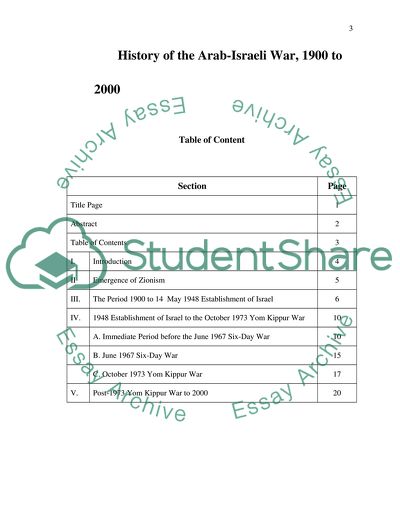Cite this document
(History of the Arab-Israeli War Research Paper Example | Topics and Well Written Essays - 4500 words, n.d.)
History of the Arab-Israeli War Research Paper Example | Topics and Well Written Essays - 4500 words. Retrieved from https://studentshare.org/history/1745266-arab-israeli-conflict
History of the Arab-Israeli War Research Paper Example | Topics and Well Written Essays - 4500 words. Retrieved from https://studentshare.org/history/1745266-arab-israeli-conflict
(History of the Arab-Israeli War Research Paper Example | Topics and Well Written Essays - 4500 Words)
History of the Arab-Israeli War Research Paper Example | Topics and Well Written Essays - 4500 Words. https://studentshare.org/history/1745266-arab-israeli-conflict.
History of the Arab-Israeli War Research Paper Example | Topics and Well Written Essays - 4500 Words. https://studentshare.org/history/1745266-arab-israeli-conflict.
“History of the Arab-Israeli War Research Paper Example | Topics and Well Written Essays - 4500 Words”, n.d. https://studentshare.org/history/1745266-arab-israeli-conflict.


